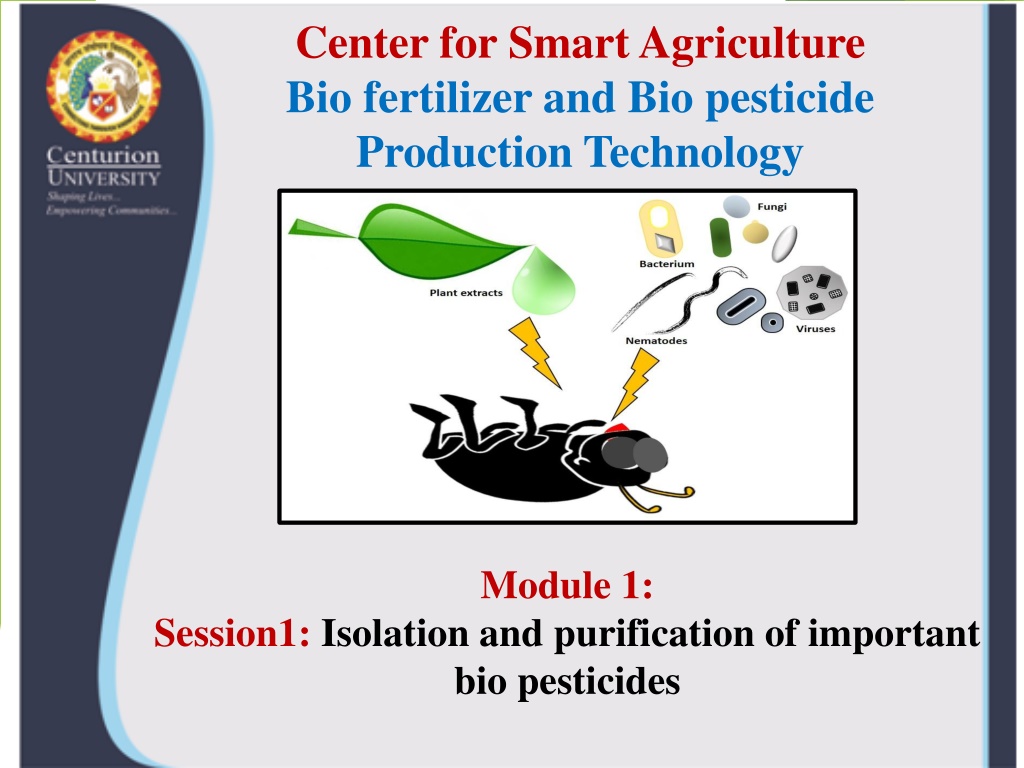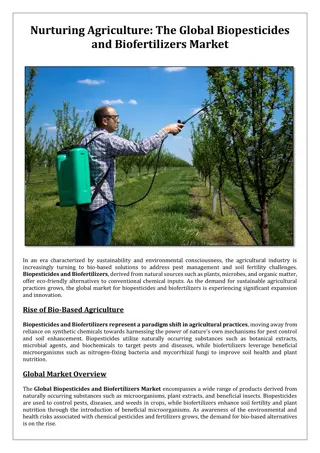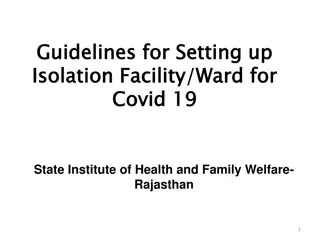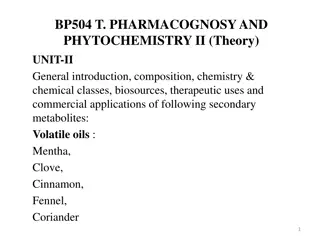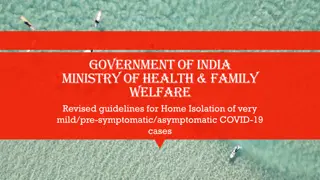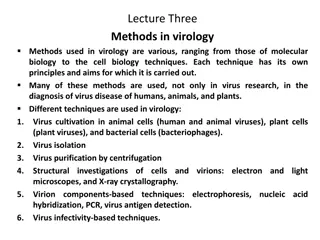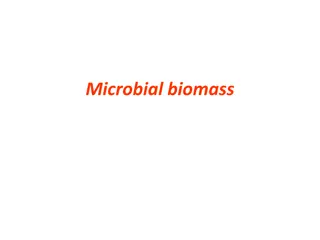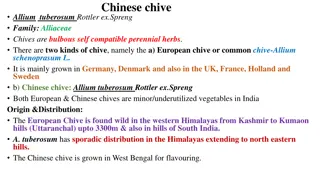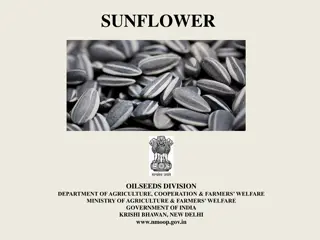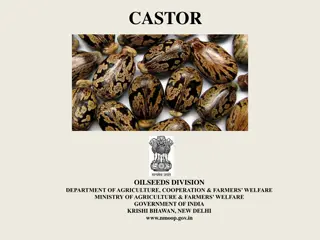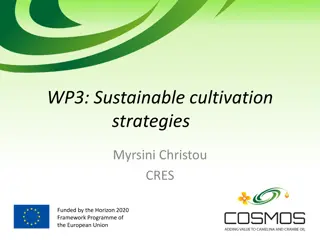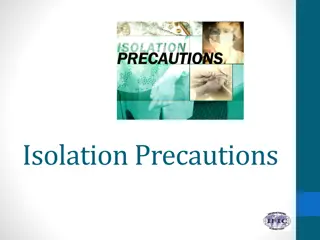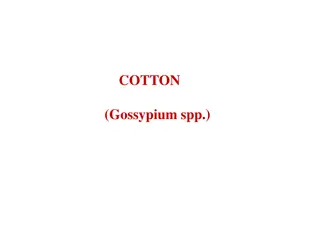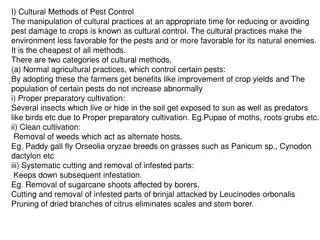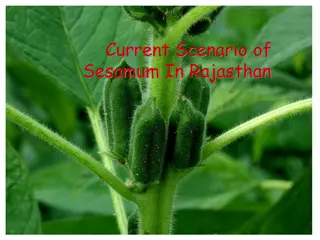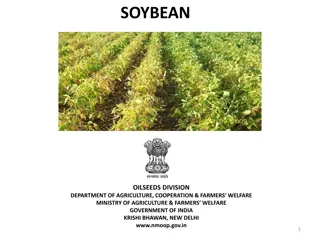Understanding Trichoderma: Isolation, Cultivation, and Applications in Biopesticides
Trichoderma, a genus of fungi, is utilized as a biopesticide for controlling fungal diseases in plants. This article covers the isolation and purification process of Trichoderma, its cultural characteristics, and its important role in smart agriculture bio-fertilizer production. Various strains of Trichoderma exhibit biocontrol mechanisms such as antibiosis and parasitism, contributing to plant health. Learn about the significance of Trichoderma in sustainable agriculture practices and its potential for biopesticide applications.
Download Presentation

Please find below an Image/Link to download the presentation.
The content on the website is provided AS IS for your information and personal use only. It may not be sold, licensed, or shared on other websites without obtaining consent from the author. Download presentation by click this link. If you encounter any issues during the download, it is possible that the publisher has removed the file from their server.
E N D
Presentation Transcript
Center for Smart Agriculture Bio fertilizer and Bio pesticide Production Technology Module 1: Session1: Isolation and purification of important bio pesticides
Pest: A pest is an organism, living and growing where they are not wanted and can cause an economical damage to plants, humans, structures, and other creatures, including crops that are grown for food. Pesticide: Pesticides are chemical substances that are meant to kill pests. Bio pesticide: A naturally occurring or derived substance or an organism or its part that controls pests.
Most commonly used microorganisms for the preparation of bio pesticides are: 1. Trichoderma 2. Pseudomonas 3. Bacillus 4. Metarhyzium All these microbes are present in the natural environment. For their utilization, we have to isolate them from their natural habitat
Trichoderma as biopesticide Several strains of Trichoderma have been developed as biocontrol agents against fungal diseases of plants. The various mechanisms include antibiosis, parasitism, inducing host-plant resistance, and competition. Most biocontrol agents are from the species T. asperellum, T. harzianum, T. viride and T. hamatum. The biocontrol agent generally grows in its natural habitat on the root surface, and so affects root disease in particular, but can also be effective against foliar diseases.
Isolation and Purification of Trichoderma Trichoderma is a genus of fungi in the family Hypocreaceae, that is present in all soils, and they are the most prevalent culturable fungi. Many species in this genus can be characterized as opportunistic avirulent plant symbionts. This refers to the ability of several Trichoderma species to form mutualistic endophytic relationships with several plant species.
Kingdom : Fungi Division : Ascomycota Class : Sordariomycetes Order : Hypocreales Family : Hypocreaceae Genus : Trichoderma
Cultural characteristics of Trichoderma Cultures are typically fast growing at 25 30 C, but some species of Trichoderma grows at 45 C. Colonies are seen transparent or white on potato dextrose agar (PDA) medium. A yellow pigment may be secreted into the agar, especially on PDA. Some species produce a characteristic sweet or 'coconut' odor. Fig 1: Initial and final mycelial growth of Trichoderma
Method for isolation of Trichoderma Several methods are available for the isolation of Trichoderma, however, one of the common and easy method is serial dilution method. Materials needed 1. Soil sample from which isolation has to be done 2. Conical flasks of 50 ml volume 3. Distilled water 4. Micropipette of 1 ml volume 5. Test tubes 6. Nonabsorbent cotton 7. Petri plates 8. Para film tape 9. Trichoderma Specific media
Trichoderma Specific media: Ingredients gm/liter Magnesium sulphate heptahydrate 0.20 Dipotassium hydrogen phosphate 0.90 Ammonium nitrate 1.00 Potassium chloride 0.15 Glucose(Dextrose) 3.00 Rose Bengal 0.15 Agar 20.00 Magnesium sulphate heptahydrate 0.20 Rose Bengal should be added to medium after sterilization and before transferring to plates.
Procedure: 1. Soil samples are collected, air dried, and ground into powder. 2. Stock solution of sample is prepared by dissolving 10 g of powdered soil sample into 90 mL of distilled water. 3. Serial dilution of samples prepared as 10 1, 10 2 10 5 in distilled water. 4. One milliliter of each of the prepared dilution is spread evenly on a suitable autoclaved medium on autoclaved petri dish at 28 1 C for 7 days. 5. After growth of fungus, pure culture of the microbe should be done in test tube slants with suitable autoclaved media. Note: All the glasswares and media used should be autoclaved and the work should be done in aseptic condition of laminar air flow after wearing of gloves and masks.
Harmful Trichoderma T. aggressivum or T. harzianum biotype 4 is the causal agent of green mold, a disease of cultivated button mushrooms. T. viride is the causal agent of green mold rot of onion and causes die back disease of Pinus nigra seedlings.
Pseudomonas as bio pesticide: Pseudomonads belong to Plant Growth Promoting Rhizobacteria important group of bacteria that play a major role in the plant growth promotion, induced systemic resistance (ISR), biological control of pathogens etc. Many species of Pseudomonas are known to enhance plant growth promotion and reduce severity of various diseases. Pseudomonads are common Gram-negative, rod-shaped bacterium, belongs to the Pseudomonas genus. (PGPR), the
Domain : Bacteria Phylum : Proteobacteria Class : Gammaproteobacteria Order : Pseudomonadales Family : Pseudomonadaceae Genus : Pseudomonas
General characteristics of Pseudomonas Pseudomonas has multiple flagella. It has an extremely versatile metabolism, and can be found in the soil and in water. It is an obligate aerobe, but certain strains are capable of using nitrate instead of oxygen as a final electron acceptor during cellular respiration. Optimal temperatures for growth is 25 30 C. Fig. 2: Colony of Pseudomonas and flagella as seen under microscope
Materials needed and procedure for isolation of Pseudomonas is same as that of Trichoderma, but the serial dilution for Pseudomonas goes up to 7-8 times and the medium used is Pseudomonas specific media and rest all the protocols are similar to that of Trichoderma. Pseudomonas Specific media: Ingredients gm/liter Peptone Magnesium chloride Potassium sulphate Triclosan (Irgasan) Agar Final pH ( at 25 C) 20.00 1.40 10.00 0.025 13.60 7.0 0.2
General characteristics of Bacillus Bacillus is a genus of Gram-positive, rod- shaped bacteria. The term is also used to describe the shape (rod) of certain bacteria; and the plural Bacilli is the name of the class of bacteria to which this genus belongs. Bacillus species can be either obligate aerobes, oxygen dependent or facultative anaerobes, having the ability to continue living in the absence of oxygen.
Domain : Bacteria Phylum : Firmicutes Class : Bacilli Order : Bacillales Family : Baciilaceae Genus : Bacillus
Materials needed and procedure for isolation of Bacillus is same as that of Trichoderma, but the serial dilution for Bacillus goes up to 7-8 times and the medium used is Bacillus specific media and rest all the protocols are similar to that of Trichoderma. Bacillus Specific media: Ingredients gm/liter L-Glutamic acid 4.00 Citric acid 2.00 Dipotassium hydrogen phosphate Ferric ammonium citrate 0.50 Magnesium sulphate Final pH ( at 25 C) 0.50 0.50 7.4 0.2
General Characteristics of Metarhizium: In the 1990s, the LUBILOSA research programme proved that M. acridum in its spore form was effective in killing locusts and other members of the Acrididea families with no deleterious effects found in field trials on any non-target species except for the domesticated silk worm Bombyx mori. Metarhizium is a genus of entomopathogenic fungi in the Clavicipitaceae family.
Kingdom Division Class Sub class Order Family Genus : : : : : : : Fungi Ascomycota Sordariomycetes Hypocreomycetidaae Hypocreales Clavicipitaceae Metarhizium
Materials needed and procedure for isolation of Metarhizium is same as that of Trichoderma, but the medium used is Metarhizium specific media and rest all the protocols are similar to that of Trichoderma. Metarhizium Specific media: Ingredients gm/liter Potassium dihydrogen Phosphate Dipotassium hydrogen phosphate Peptone Magnesium sulphate Dextrose Yeast extraxt Rose Bengal Streptomycin sulphate 0.50 0.50 0.50 0.50 10.00 0.50 0.05 0.03 Rose Bengal and streptomycin sulphate should be added to medium after sterilization and before transferring to plates
